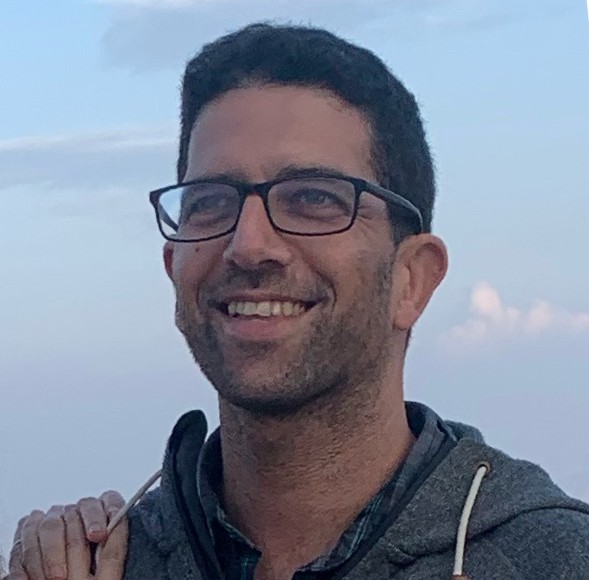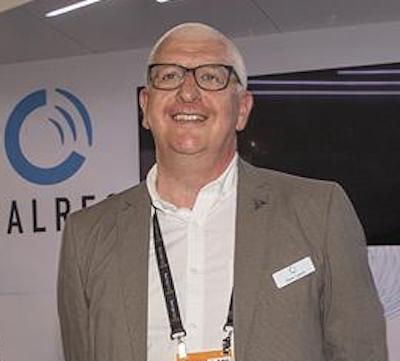Tech Focus: Audio Consoles, Part 1 — Cloud-Based Systems Are Next in a History of Constant Change
Offering user-definable operation, virtualized worksurfaces are here to stay
Story Highlights
Even 20 years ago, it was easy to define a broadcast-audio–mix console: a hub and matrix for discrete audio signals to be processed and combined into stereo or one surround format or another, for use with picture. In the IP/ST 2110 world, though, it’s getting harder to tell a proper mix desk from a generic touchscreen.
COVID accelerated an ongoing shift to software-based mix systems: combinations of physical and virtual faders and processing engines that essentially mimic the way conventional hardware-based mixers work. The next generation in that shift is headed for the cloud.

Waves’ Noam Raz: “We developed an intuitive user interface that combines touchscreen and tactile operation, and we’re committed to keeping it that way.”
Waves, the Israeli audio-plugin–processing developer — whose wares have included noise-reduction and mastering applications largely for music production for the past decade — has essentially built a virtual mix console around those plugins. According to Waves Live Division GM Noam Raz, the Cloud MX audio mixer, introduced just over a year ago after a development process that began in 2016, is a fully cloud-based audio mixer developed for cloud-broadcast environments. Like the next-gen, transitional type of product it is, it’s at home in both NDI-based environments and is also deployable on Amazon Web Services’ Elastic Compute Cloud (Amazon EC2) and, more recently, on Google’s GCP cloud platform for integration with cloud production systems. Offered as a subscription-based monthly or annual license (a business model now common for software products and pioneered in pro audio by Avid’s Pro Tools), the Cloud MX is intended to eliminate the need for hardware-based solutions on multi-site remote productions.
However, the Cloud MX retains enough console heritage to be familiar to A1s who grew up on all-hardware desks, says Raz, citing a UK-based Premier League mixer who lauded the unit’s familiar faders. “We developed an intuitive user interface that combines touchscreen and tactile operation, and we’re committed to keeping it that way.”
The Cloud MX, he notes, isn’t intended to replace large desks typically used in production trucks or facilities — at a maximum of 64 I/O, it would be hard-pressed to — but does represent a new operational and economic model for a broadcast sector looking for new ideas on both levels.
Systems To Suit Generations of A1s

Calrec’s Dave Letson: “The challenge is to walk the fine line between the complexity of an IP environment and the flexibility that a market like this demands.”
Calrec’s new Argo broadcast-audio–mixing system, built around an expanded version of the company’s ImPulse IP core, had its first commercial use in June on a sports show in Australia. In some ways, notes Calrec VP, Sales, Dave Letson, the system has the same physical attributes as conventional consoles, including faders and color-coded rotary knobs, which he says are necessary to accommodate the largely older A1 cohort. Underneath, though, it’s all 21st century: native IP connectivity based on ST 2110 standards, with thousands of DSP paths able to power as many as four independent mix environments, each able to access more than 2,350 processing paths.
The system was also designed to be a user-definable control surface, offering operator personalization, something any Gen-Zer would appreciate. “The challenge for console design now,” Letson says, “is that it has to walk the fine line between the complexity of an IP environment and the flexibility that a market like this demands.”
Integration Into an Ecosystem

Lawo’s Johan Boqvist: “In most installations, the audio console is part of a bigger solution; therefore, system-integration features are important.”
Johan Boqvist, product evangelist, audio infrastructure, Lawo, underscores the extent to which console functionality has changed in recent years, part because of pandemic-driven remote operation. Consoles increasingly offer dynamic and intuitive user interfaces using touchscreens instead of hardware buttons, enhanced compute power, native support for redundant audio-over-IP channels/streams (AES67, ST 2110-30/31, and ST 2022-7), redesigned controls for 3D panning, and intuitive support for immersive audio productions.
“Another example of system integration,” he notes, “is support for live video streams integrated in the consoles — as source thumbnails, directly in an mc² channel strip, or in a screen in front of the operator, powered by Lawo VisTool.”
At the same time, Boqvist says, the console itself has become part of a larger broadcast-audio ecosystem.
“We have a shrinking number of installations and projects where the console sits on its own,” he explains. “In most installations, the audio console is part of a bigger solution; therefore, system-integration features are as important as, for example, EQ parameters or gain controls. In a broadcast environment, an overarching control system is always required.
“However,” he continues, “there is no out-of-the-box configuration or template for configuring and deploying the broadcast controller. It’s very project-specific and can be anything from a single instance and a few endpoints, up to a distributed, fully redundant system with 1,000 or more endpoints. The consoles therefore need to be customizable and flexible. All our products obviously have native support for VSM, Lawo’s Broadcast Control System, but we are not limited to VSM, and by using industry-agreed APIs, we also support integration with most control systems on the market.”
Expectations for the Design

SSL’s Berny Carpenter: “Each group of users were going to have expectations of certain types of interaction with the desk. We had to anticipate that in the design.”
When Solid State Logic was developing its System T broadcast console in 2015, it designed it for an IP-connected environment, but, says SSL Broadcast Product Manager Berny Carpenter, “we were careful to present to operators that they didn’t need to be an IT engineer to use it. It works like a network device but operationally looks and behaves like a traditional audio console.”
The System T is modularized into key components — control surface, processing, IP connection — but with touchscreen GUI identical across all components; similarly identical is the software, which is also its connection to the cloud environment. The understanding was that an existing generation of A1s were going to look for familiar interfaces even as the next generation was going to transition from their tablets to the console.
“Each group of users were going to have expectations of certain types of interaction with the desk,” he says. “We had to anticipate that in the design.”
Where Does AI Fit In?
What’s harder to predict is where console design goes next, as AI looms above the entire tech sector.
“That’s a huge question,” says SSL’s Carpenter, “because the growth around AI is happening at frightening speed, and every manufacturer is looking at how best to use it. Its potential is unlimited, but the applications still need to be determined.”
The interaction between such technologies as audio-over-IP and virtualized or containerized services in the same environment promises many benefits, Lawo’s Boqvist contends: “Audio processing, routing, and mixing can be virtualized, we believe. With virtualized applications, processing no longer needs to rely on dedicated hardware and can literally run ‘anywhere’ on a network – on prem, off-prem, or in a public cloud.
“While AoIP and virtualized applications are primarily standalone technologies,” he continues, “they unleash their true potential when you combine them. This interaction creates added value through more-efficient use, flexible and scalable provision, and overarching orchestration.”
Calrec’s Letson opines that, despite what seem like radical changes in console design in recent years, basic functionality — routing and processing engines and, to an extent, even form factors — won’t change that much in the next half decade or so. That’s in part to maintain the evolutionary rate of development necessary to bridge the generational gaps for A1s.
Under the hood, however, change is never-ending, with the next phase taking consoles deeper into cloud environments.
“Our worksurfaces have tended to last as long as 10 or 12 years,” Letson says. “It’s the backend where everything is constantly changing.”
Click here for Tech Focus: Audio Consoles, Part 2 — Remote Products Are a Small but Diverse Category.
